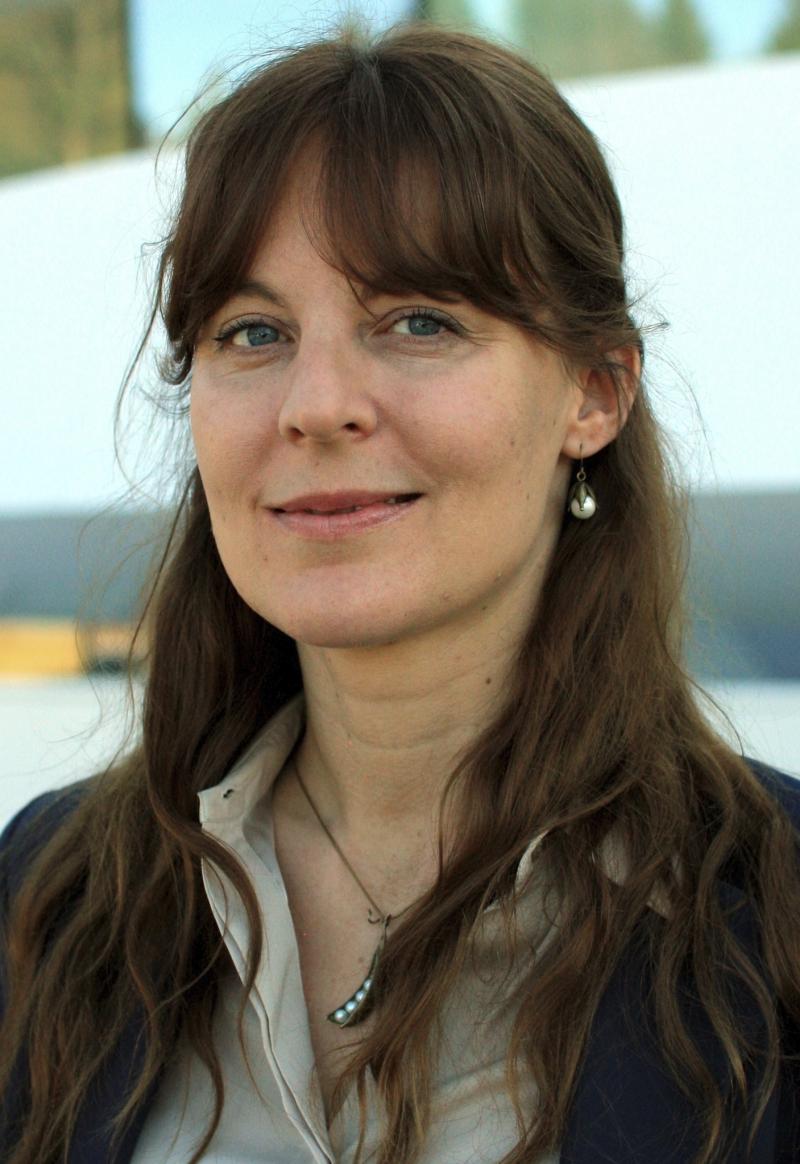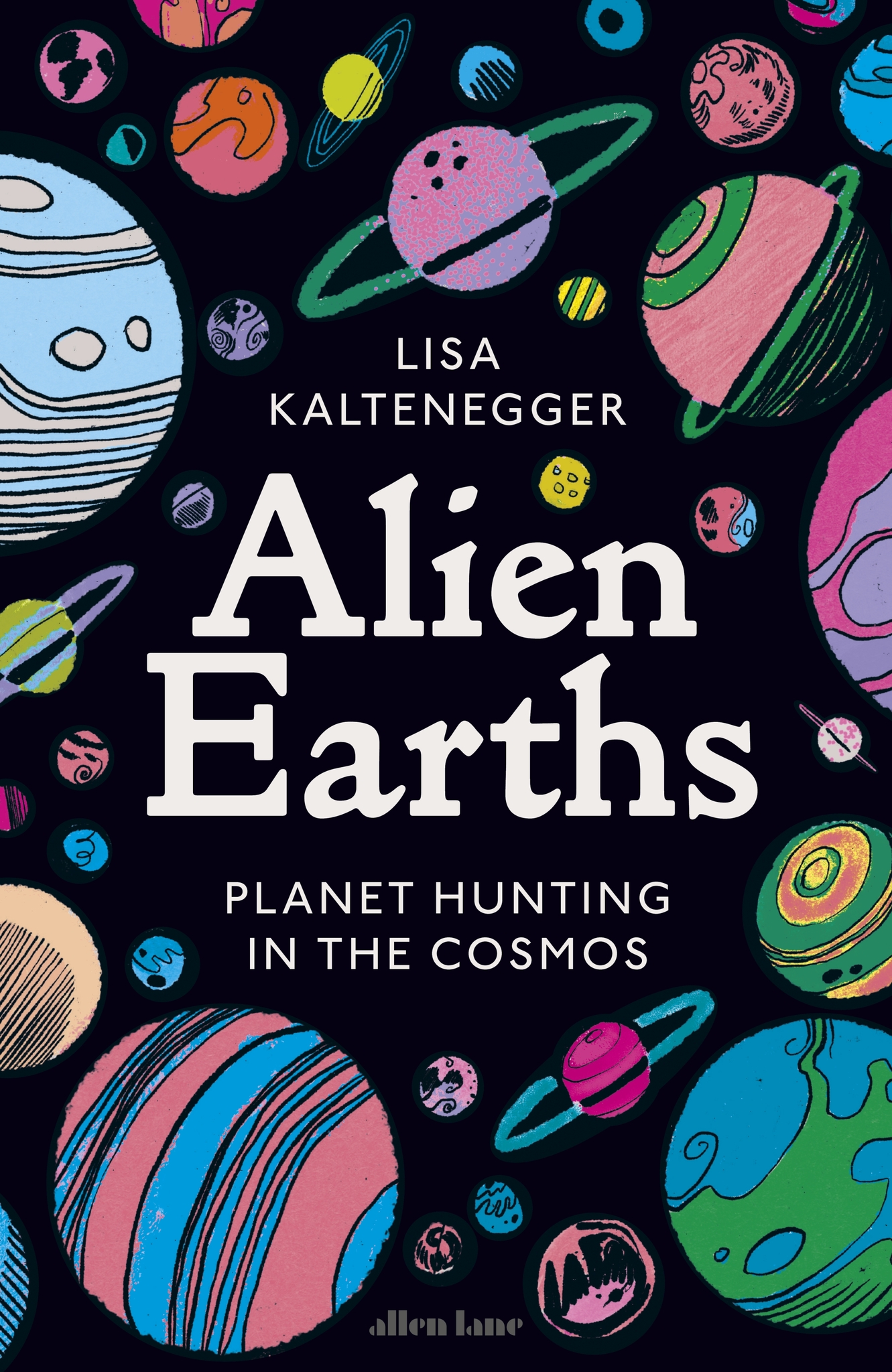Lisa Kaltenegger: Alien Earths review - a whole new world | reviews, news & interviews
Lisa Kaltenegger: Alien Earths review - a whole new world
Lisa Kaltenegger: Alien Earths review - a whole new world
Kaltenegger's traverses space in her thoughtful exploration of the search for life among the stars

Our home planet orbits the medium-size star we call the Sun. There are unfathomably many more stars out there. We accepted that these are also suns a little while back, cosmically speaking, or a few hundred of our human years ago. Ever since, in imagination, we have supplied other stars with planets, and planets with life. Science, so far, has lagged behind fiction. That may be about to change.
The known universe has grown almost unimaginably larger since the time of Galileo. That feels like it should increase the chance there is something else alive out there, somewhere. But how to really detect that life, in the regrettable absence of any obvious attempts by other intelligences to communicate?
It makes sense to work in stages. Find other stars with planets, or exoplanets in current jargon. Determine that some of those planets are Earth-like, on the grounds that our current sample of one has yielded all our current knowledge about how life began, evolves and behaves. Focus on the Earth-a-likes, and search for chemical signatures of the kinds of life we know, or can imagine.
The first two tasks have become possible pretty recently, with spectacular results. The latest telescopes can detect the minute differences in light from a star when a planet passes in front of it. At first, the finds were all large, like our vast neighbour Jupiter, and very close to their governing star. But now we can register smaller planets - and the tally includes bodies that combine the right distance from a star of bearable intensity with a gravity strong enough to retain an atmosphere, if there is one, to qualify as Earth-like.
 It takes time to survey stars this way, but the likely numbers are extraordinary. The Kepler space telescope, launched in 2009, surveyed a few hundred thousand stars, with results indicating that there are more planets than stars in our galaxy. A fair proportion of them are small, rocky objects in the “Goldilocks zone”, neither too hot nor too cold to retain liquid water. As there are two hundred billion stars in the Milky Way, it is tempting to conclude now that it is odds on some of them shine on living planets. (There are, of course, billions more galaxies, but the others are too far away for Earth-bound astronomers to dissect in this fashion).
It takes time to survey stars this way, but the likely numbers are extraordinary. The Kepler space telescope, launched in 2009, surveyed a few hundred thousand stars, with results indicating that there are more planets than stars in our galaxy. A fair proportion of them are small, rocky objects in the “Goldilocks zone”, neither too hot nor too cold to retain liquid water. As there are two hundred billion stars in the Milky Way, it is tempting to conclude now that it is odds on some of them shine on living planets. (There are, of course, billions more galaxies, but the others are too far away for Earth-bound astronomers to dissect in this fashion).
But what about the clincher: actual signs of life? As we’re confined to observation from a vast distances, we’ll still be going by appearances –or the sophisticated variants of that method that go under the heading of spectroscopy. How, exactly, does a planet look? That is, when a planet reflects its own starlight, what proportions of what wavelengths of radiation might be discernible? Lisa Kaltenegger calls this a “light fingerprint”.
Kaltenegger is director of the helpfully named Carl Sagan Institute to Search for Life in the Cosmos at Cornell University. Her book follows from her job description. Her own work has concentrated on synthesising information from any disciplines that seem relevant to the question. That includes study of the history of our own living planet, from geology and evolutionary biology. They show that conditions here in the past were quite unlike those we enjoy today, and that life can exist in forms very different from the ones we think of as typical on Earth. Add the data gleaned from space probes that have sent close-ups of the other planets – and their moons – in our own system and careful analysis can produce a typology of possible planetary environments, and what the kind of life they might support would look like from a very, very long way away.
It is still partly work that rests on disciplined imagination, in other words, but yields computer models of possible worlds that can be used as guides to observation of the ever rising number of known exoplanets. Kaltenegger gives many detailed examples of the planetary environments that might arise out there, and how to recognise them, along with vignettes from her career and more astringent recollections of her progress as a woman in a largely male enterprise.
This is her first book, and she delivers a very competent popularisation of her work that assumes no prior knowledge at all. It is indeed an excellent update on alien earths, and there is a lot to get up to date with. Still, our knowledge has key limitations, and the book is more about the (possible) earths than the aliens.
Which raises a small doubt about a premise common to such accounts. Confirming the existence of life on other planets, they say, would change everything. Kaltenegger, who is properly cautious about what we know, or can know, most of the time, adopts the party line here. “Discovering life on another planet”, she writes, “would forever revolutionise our entire worldview.” Well, perhaps.
I would certainly love to still be around when we have a clearer view of whether there is other life out there - and already planned astronomy projects may well give us that in the next decade or three. And it’s true, in a sense, that it would be a big change. We would be able to move on from one portion of what I think of as the minimal summary of what we know about the universe. We know, I reckon, that there is stuff. And we know that there is at least one small corner of this galaxy where stuff can self-organise cleverly enough to inflate a small bubble of consciousness, which then wonders how it got here. For now, anybody who wants to go beyond that is moving into speculation.
The enterprise Kaltenegger works at so determinedly aims to alter that “at least one”. And we are indeed intriguingly poised at a time when there may be hard evidence of life emerging more than once, in the near future. But if we, the living, are not alone, that raises more questions that will remain hard to answer. Earth history indicates that life appeared rapidly, geologically-speaking, but then stayed simple for a billion years or more. Is the leap to more complexity than bacteria and viruses can sustain, then to multicellular creatures, always so difficult? What are the chances of intelligence emerging after that? And, if there are intelligent aliens, might we ever communicate with them, or even go visiting?
Simply increasing the number of living worlds we think we know about from one to two, or even many, isn’t much help with these harder questions (though galactic distances mean the answer to the last pair is very likely to be, “no chance”).
So let’s not get too excited about the undoubted progress that’s been made toward identifying life on other, real planets in our galaxy. But progress there has been, and that itself is remarkable enough to make this lively account of where that work stands a rewarding read.
- Alien Earths: Planet Hunting in the Cosmos by Lisa Kaltenegger (Allen Lane, £25)
- More book reviews on theartsdesk
more Books
 Jonn Elledge: A History of the World in 47 Borders review - a view from the boundaries
Enjoyable journey through the byways of how lines on maps have shaped the modern world
Jonn Elledge: A History of the World in 47 Borders review - a view from the boundaries
Enjoyable journey through the byways of how lines on maps have shaped the modern world
 Lisa Kaltenegger: Alien Earths review - a whole new world
Kaltenegger's traverses space in her thoughtful exploration of the search for life among the stars
Lisa Kaltenegger: Alien Earths review - a whole new world
Kaltenegger's traverses space in her thoughtful exploration of the search for life among the stars
 Heather McCalden: The Observable Universe review - reflections from a damaged life
An artist pens a genre-spanning work of tender inconclusiveness
Heather McCalden: The Observable Universe review - reflections from a damaged life
An artist pens a genre-spanning work of tender inconclusiveness
 Dorian Lynskey: Everything Must Go review - it's the end of the world as we know it
Authoritative account of how the apocalypse has always been just around the corner
Dorian Lynskey: Everything Must Go review - it's the end of the world as we know it
Authoritative account of how the apocalypse has always been just around the corner
 Andrew O'Hagan: Caledonian Road review - London's Dickensian return
Grotesque and insightful, O’Hagan’s broad cast of characters illuminates a city’s iniquities
Andrew O'Hagan: Caledonian Road review - London's Dickensian return
Grotesque and insightful, O’Hagan’s broad cast of characters illuminates a city’s iniquities
 Annie Jacobsen: Nuclear War: A Scenario review - on the inconceivable
Brimming with terrifying facts and figures, but struggling with an immeasurable subject
Annie Jacobsen: Nuclear War: A Scenario review - on the inconceivable
Brimming with terrifying facts and figures, but struggling with an immeasurable subject
 Anna Reid: A Nasty Little War - The West's Fight to Reverse the Russian Revolution review - home truths
Reid brings to light a war the West has tried its best to forget
Anna Reid: A Nasty Little War - The West's Fight to Reverse the Russian Revolution review - home truths
Reid brings to light a war the West has tried its best to forget
 Tom Chatfield: Wise Animals review - on the changing world
A compelling account of how we use technology – and how it uses us
Tom Chatfield: Wise Animals review - on the changing world
A compelling account of how we use technology – and how it uses us
 Sheila Heti: Alphabetical Diaries review - an A-Z of inner life
Heti goes far beyond a gimmick in this work of surprising and moving insight
Sheila Heti: Alphabetical Diaries review - an A-Z of inner life
Heti goes far beyond a gimmick in this work of surprising and moving insight
 David Harsent: Skin review - our strange surfaces
A fine poet pens a set of resilient expressions and elegant introspections
David Harsent: Skin review - our strange surfaces
A fine poet pens a set of resilient expressions and elegant introspections
 Brian Klaas: Fluke review - why things happen, and can we stop them?
Sweeping account of how we control nothing but influence everything
Brian Klaas: Fluke review - why things happen, and can we stop them?
Sweeping account of how we control nothing but influence everything
 Richard Schoch: Shakespeare's House review - nothing ill in such a temple
Scholar makes the Bard's house a home in his history of dramatic domesticity
Richard Schoch: Shakespeare's House review - nothing ill in such a temple
Scholar makes the Bard's house a home in his history of dramatic domesticity

Add comment